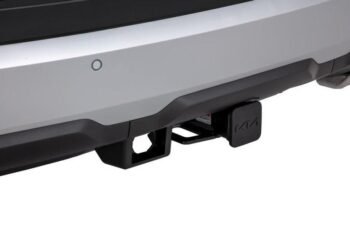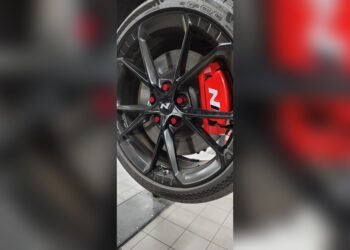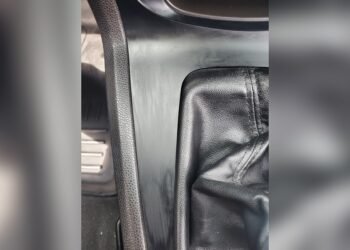Are your Toyota license plate screws stuck and refusing to budge no matter how hard you try? You’re not alone, and it can be incredibly frustrating when those small screws won’t come loose—especially if they’re rusty or stripped.
But don’t worry, you don’t have to call a mechanic just yet. In this guide, you’ll discover simple, effective tricks to free those stubborn screws and get your license plate off without damaging your car. Keep reading to learn the step-by-step solutions that make this common problem a thing of the past.
Your Toyota deserves the best care, and you deserve to fix this hassle quickly and confidently.

Credit: www.reddit.com
Common Causes Of Stuck Screws
Stuck Toyota license plate screws cause frustration during removal. Understanding common causes helps fix them quickly. Three main issues lead to stuck screws. These are rust and corrosion, stripped screw heads, and broken or damaged screws. Each problem affects the screw’s removal in different ways.
Rust And Corrosion
Rust often forms on license plate screws exposed to weather. Moisture and road salt speed up corrosion. Rust bonds the screw tightly to the plate and car body. This makes the screw very hard to turn or remove. Rust can also weaken the screw’s metal, causing it to break easily.
Stripped Screw Heads
Stripped screw heads lose their shape from over-tightening or using wrong tools. The screwdriver slips and damages the screw’s grip points. This prevents the screwdriver from turning the screw properly. Stripped heads need special methods to regain grip and unscrew them.
Broken Or Damaged Screws
Screws may break inside the hole if forced too hard. Damage can happen from rust or poor quality screws. Broken screws leave part of the shaft stuck in the car. This makes removal tricky, requiring tools like pliers or drills. Damaged screws need careful handling to avoid further harm.
Basic Removal Techniques
Removing stuck Toyota license plate screws can be frustrating. Basic removal techniques help ease this task. These methods require simple tools and patience. Follow clear steps to prevent damage to your vehicle or screws.
Applying Upward Pressure
Start by applying upward pressure under the license plate near the screw. Use a flat tool, like a plastic pry tool or a credit card. This lifts the plate slightly, helping the screw threads catch better. It also reduces resistance when turning the screw. Press gently to avoid bending the plate or scratching paint.
Using Pliers Or Vise Grips
If the screw head is exposed, use needle-nose pliers or vise grips. Grip the screw firmly and turn counter-clockwise. Steady, slow movements work best to avoid slipping. Sometimes applying upward pressure while twisting helps loosen the screw. If the screw is rusty, spray a little penetrating oil first. This can break the rust seal and ease removal.
Tapping With A Hammer
Lightly tap the screwdriver handle with a small hammer while turning the screw. This vibration can break rust bonds holding the screw in place. Tap gently to avoid damaging the screw head or surrounding area. Use a screwdriver that fits well to prevent stripping the screw. Repeat tapping and turning in small steps until the screw loosens.
Dealing With Stripped Screws
Stripped license plate screws on your Toyota can be frustrating. These screws lose their grip, making removal tough. Stripped screws often occur due to rust or over-tightening. Dealing with them requires patience and the right tools. Try simple methods before moving to advanced techniques. Below are effective ways to tackle stripped screws safely and efficiently.
Rubber Band Grip Trick
Place a wide rubber band over the stripped screw head. Press the screwdriver firmly into the rubber band. The rubber adds extra grip between the tool and screw. Turn the screwdriver slowly to loosen the screw. This method works best with mildly stripped heads. It prevents the screwdriver from slipping further.
Cutting A New Groove
Use a small rotary tool or hacksaw to cut a new groove on the screw head. The groove should be deep enough for a flathead screwdriver. This gives a fresh grip surface to turn the screw. Be careful not to damage the surrounding area. Clean the groove before attempting to unscrew.
Clamping The Screw Shaft
If the screw head is badly damaged, clamp the shaft with needle-nose pliers. Apply a lubricant like WD-40 to ease rust or dirt. Hold the pliers tightly and turn the screw counterclockwise. This method works when the head is stripped or broken off. Take care to avoid slipping and injuring yourself.

Credit: www.reddit.com
Advanced Removal Methods
Removing stuck Toyota license plate screws often requires more than basic tools. Advanced removal methods help tackle screws that resist simple unscrewing. These techniques use specific tools and tricks to loosen or extract screws safely.
Each method suits different screw conditions, such as rust, stripping, or breakage. Choose the method that fits your situation to avoid damage to your vehicle or the plate.
Using Left-handed Drill Bits
Left-handed drill bits turn counterclockwise. This motion can unscrew stubborn screws during drilling. Start with a small bit to avoid damaging the plate or hole.
Drill slowly and steadily. The bit may catch and spin the screw out naturally. If the screw loosens, stop drilling and try to remove it with pliers.
This method works well for screws stuck due to rust or minor stripping. It minimizes damage and often removes the screw intact.
Drilling Out The Screw
Drilling out involves using a drill bit to bore through the screw shaft. Choose a bit slightly smaller than the screw diameter. Drill carefully to avoid enlarging the hole.
Once drilled through, the screw’s grip is lost, and the plate can be removed. This method is useful for screws with damaged heads or extreme rust.
Protect surrounding areas with tape or cloth. This prevents scratches or dents during drilling.
Heating The Screw
Heating the screw expands the metal and breaks rust bonds. Use a heat gun or propane torch carefully to warm the screw for a few minutes. Avoid overheating to protect paint and plastic parts.
After heating, try turning the screw with a screwdriver or pliers. Heat softens rust and makes turning easier. Repeat heating if needed but keep safety in mind.
This method works best on metal screws stuck from corrosion. It improves chances of removal without drilling or breaking the screw.
Preventing Future Issues
Preventing stuck Toyota license plate screws saves time and frustration. Simple steps help keep screws easy to remove. Regular care and the right tools reduce rust and damage.
Use these methods to avoid future problems with your license plate screws.
Applying Anti-seize Lubricant
Apply anti-seize lubricant to screws before installing them. This stops rust and corrosion from forming. It creates a thin barrier between metal parts. It also makes screws easier to remove later. Use a small amount on the screw threads only. Avoid getting lubricant on the license plate surface.
Choosing The Right Screws
Pick screws made of stainless steel or coated with rust-resistant material. These screws last longer and resist corrosion better. Avoid plain steel screws that rust quickly. Check screw size matches your Toyota model. Proper fit prevents damage and helps secure the plate firmly.
Regular Maintenance Tips
Check license plate screws regularly for rust or looseness. Tighten loose screws with the correct screwdriver. Clean screws and plate area to remove dirt and moisture. Reapply anti-seize lubricant yearly or after washing your car. Replace any damaged or rusted screws promptly. This keeps your license plate secure and easy to remove.
Tools And Products To Have Handy
Having the right tools and products ready makes removing stuck Toyota license plate screws easier. Rust and tight fitting can cause screws to seize. A few simple tools help loosen and remove these screws safely. Prepare these items before starting work on your license plate.
Screwdrivers And Pliers
Screwdrivers are essential for turning screws. Flathead and Phillips screwdrivers cover most screw types. Choose a screwdriver that fits the screw head tightly to avoid slipping. Pliers, especially needle-nose or locking types, grip screws firmly. They help turn or pull out screws when the head is damaged or stripped.
Drill Bits And Power Tools
Drill bits are useful for drilling out stuck screws. Match the bit size to the screw shaft for best results. A power drill speeds up the removal process. Left-handed drill bits work well by unscrewing screws as they drill. Use power tools carefully to avoid damage to the license plate or vehicle.
Lubricants And Rust Removers
Rust is the main reason screws get stuck. Apply lubricants like WD-40 to loosen rust and corrosion. Let the lubricant soak into the screw for several minutes. Rust removers break down corrosion on the screw threads. This makes turning or drilling the screws easier and less damaging.
When To Seek Professional Help
Dealing with stuck Toyota license plate screws can be frustrating. Sometimes, the problem worsens with every attempt to remove them. Knowing when to call a professional mechanic saves time and prevents damage. Professionals have the right tools and skills to handle stubborn screws safely.
Signs You Need A Mechanic
The screw head is stripped or damaged beyond repair. You cannot turn the screw despite using proper tools. The screw breaks inside the hole, leaving a stuck fragment. You feel resistance that may cause slipping or injury. Rust or corrosion covers the screw heavily. Your attempts cause scratches or dents on the car’s paint. The screw is in a hard-to-reach or tight spot. You lack the proper tools or experience to continue safely.
Avoiding Damage To Your Vehicle
Forcing stuck screws risks scratching or denting the vehicle. Using wrong tools may strip the screw head further. Applying excessive force can crack the license plate or bumper. Professionals use lubricants to loosen rust without harm. They protect paint and body while removing screws. Expert removal prevents costly repairs or repainting. They ensure the new screws fit securely and safely.

Credit: www.amazon.com
Frequently Asked Questions
How To Remove License Plate Screws That Are Stuck?
Apply penetrating oil to loosen rust. Use pliers or vise grips to twist screws counter-clockwise. Tap screwdriver gently with a hammer while turning. For stripped heads, add a rubber band for grip or cut a new groove. Use a left-handed drill bit or heat screw slightly to remove.
What To Do If I Can’t Get My License Plate Off?
Apply upward pressure under the plate near the screw. Use pliers to twist counter-clockwise. Tap the screwdriver end gently. Try a rubber band on a stripped head for grip. Use a left-handed drill bit or heat the screw slightly to loosen it.
What Size Screws Are Used For A Toyota License Plate?
Toyota license plates typically use 14 x 1-inch screws. These are standard self-tapping screws designed for secure mounting. Always choose screws compatible with your Toyota model to ensure proper fit and avoid damage. Using stainless steel screws helps resist rust and corrosion for long-lasting durability.
How To Remove Licence Plate Security Screws?
Use needle-nose pliers or vise grips to twist security screws counter-clockwise. Apply penetrating oil and tap the screwdriver gently. For stripped heads, place a rubber band for grip or cut a new groove. Use a left-handed drill bit to remove stubborn screws carefully.
How Do I Remove Stuck Toyota License Plate Screws?
Apply upward pressure, use pliers to grip, and twist counter-clockwise to loosen screws.
Conclusion
Stuck Toyota license plate screws can be frustrating to remove. Use simple tools like pliers, screwdrivers, or a rubber band for better grip. Applying gentle taps or upward pressure helps break rust seals. For tough screws, try drilling or heating carefully.
Always work slowly to avoid damage. With patience, you can remove stuck screws safely and reinstall your plate. Keep these tips in mind for smooth repairs. Your Toyota will look neat again in no time.

















